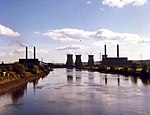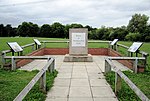Addison and Hedgefield Reserve
Metropolitan Borough of GatesheadNature reserves in Tyne and Wear
Addison and Hedgefield Reserve is a woodland area located in the region of Gateshead, United Kingdom, situated to the north of the B6317 to the west of Ryton, Tyne and Wear. The reserve holds historical significance as it was once the site of a working coal pit and a vibrant mining community. Today, it encompasses woodlands, scrub, grasslands, and wet grasslands, that contain a variety of plant and animal species.
Excerpt from the Wikipedia article Addison and Hedgefield Reserve (License: CC BY-SA 3.0, Authors).Addison and Hedgefield Reserve
Main Road,
Geographical coordinates (GPS) Address Nearby Places Show on map
Geographical coordinates (GPS)
| Latitude | Longitude |
|---|---|
| N 54.971972222222 ° | E -1.7400555555556 ° |
Address
Main Road
Main Road
NE21 4NB
England, United Kingdom
Open on Google Maps








